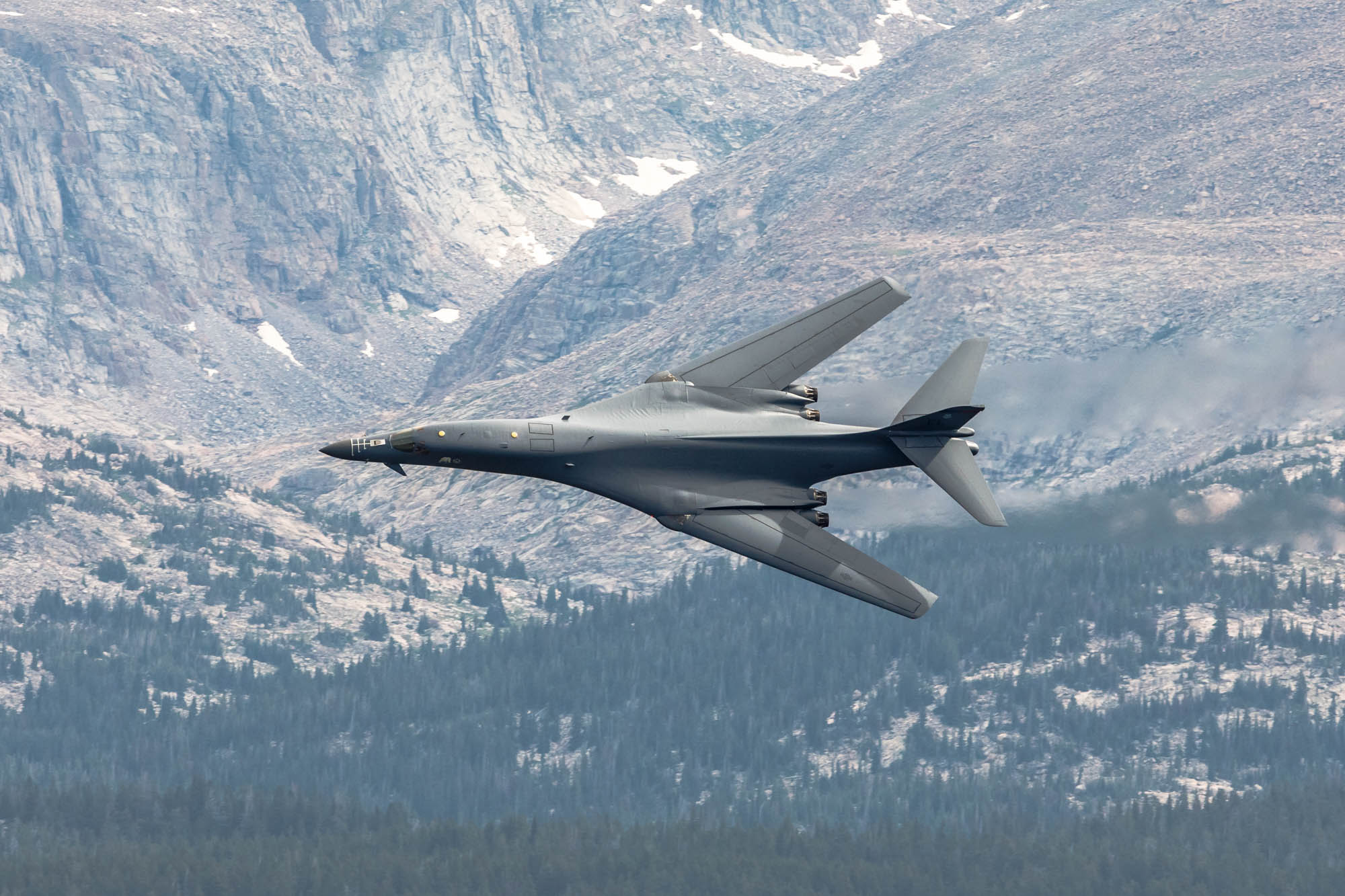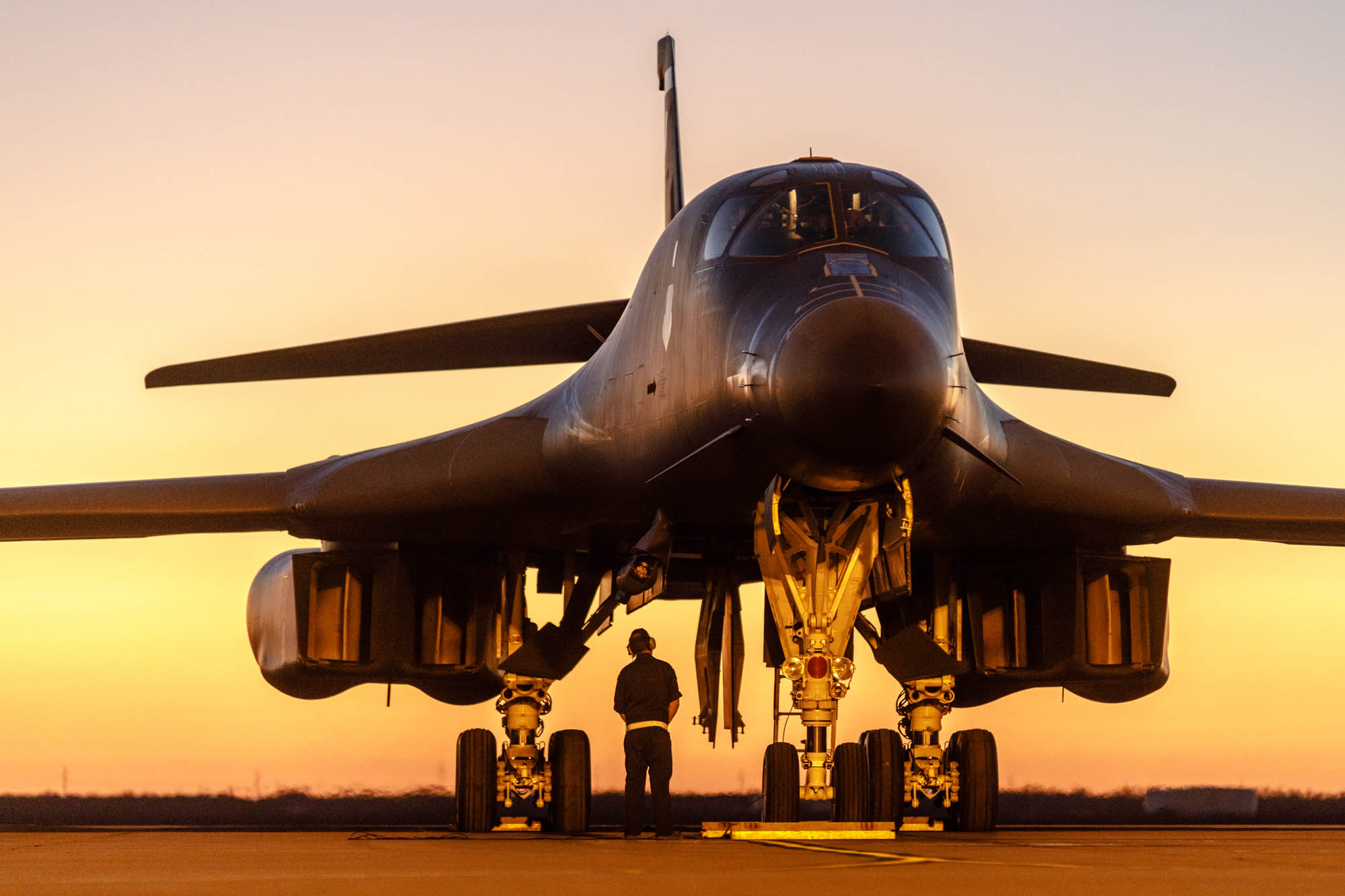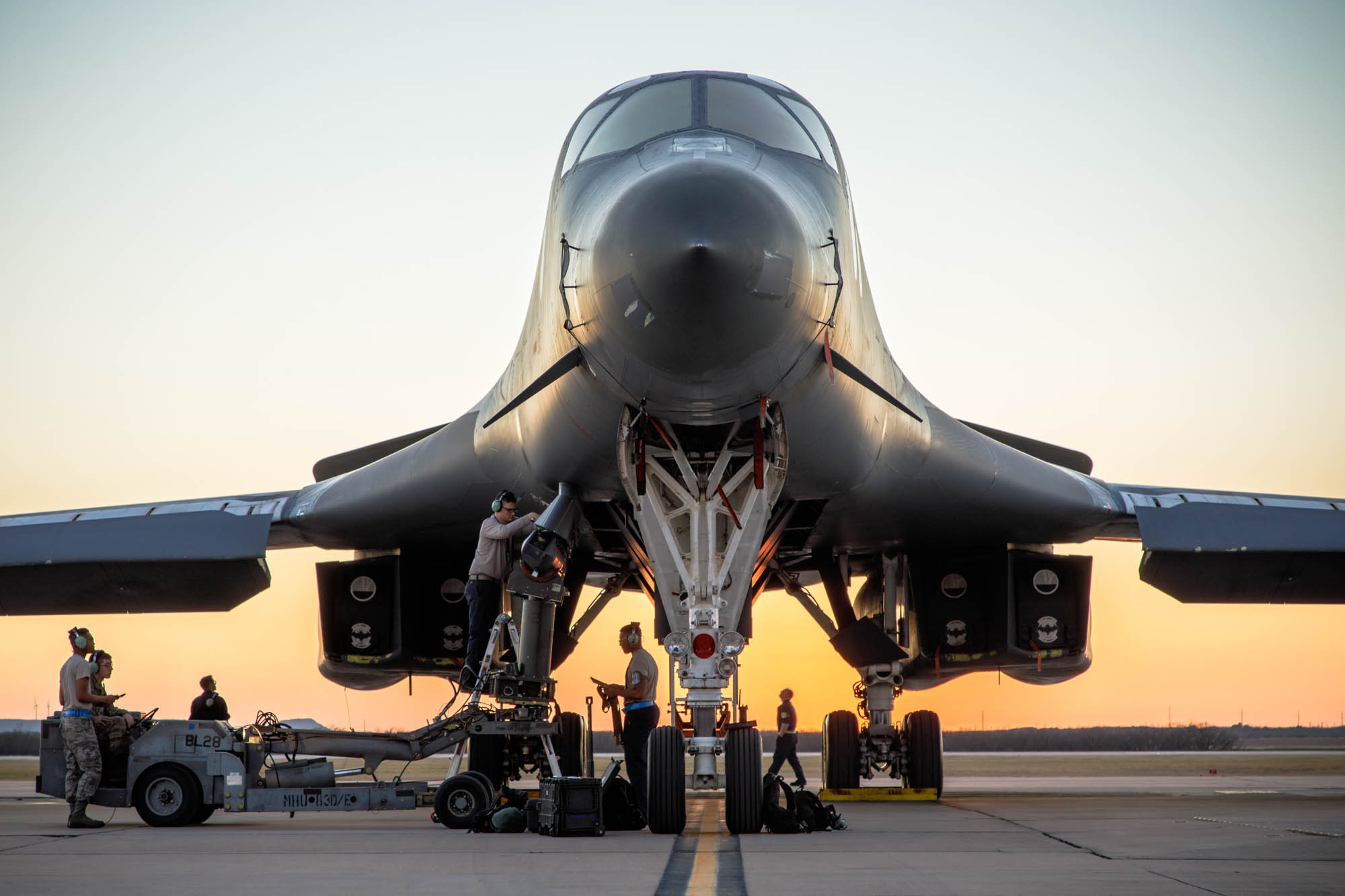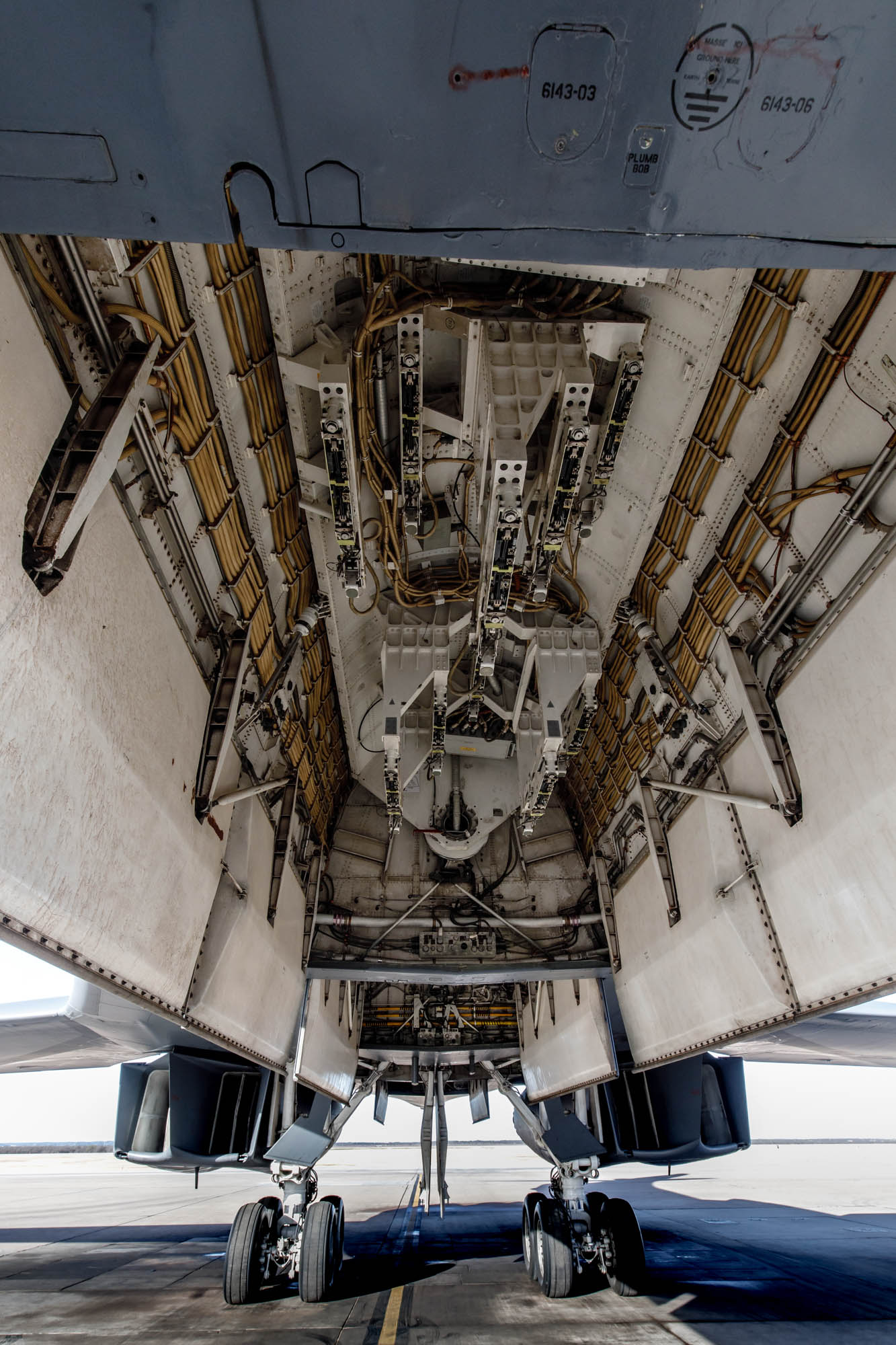Flying the B-1B Lancer
Dyess AFB, Texas and Ellsworth, South Dakota |
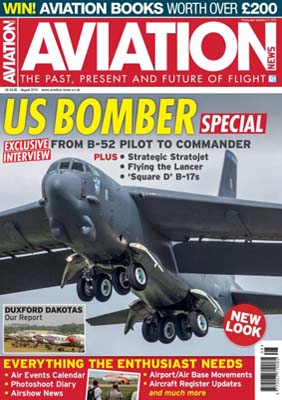
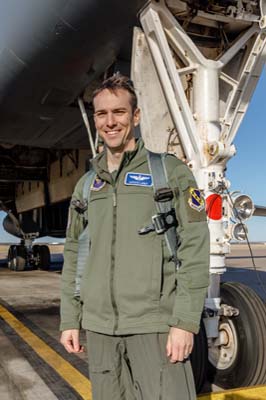 |
Major Michael 'Coyote' Laney a B-1B pilot; "Our normal speed is 540 knots for low level which is around nine miles [15 km] a minute. At 300 feet that is challenging, you can do it for a good length of time, but it is exhausting, especially if the terrain is hills and mountains and there is a small margin of error." |
The B-1B Lancer is a highly valued and formidable aircraft that has been worked hard in recent years. Philip Stevens for Aviation News asks B-1 aircrew how they employ the bomber and its weapons systems in combat in the Middle East – a key theatre of its operations for almost two decades.
In April this year the US Air Force's (USAF) Global Strike Command reported they had overcommitted its fleet of Rockwell (Boeing) B-1B Lancer bombers in Middle East operations over the last decade, causing it to deteriorate more quickly. Normally 40% of any fleet of aircraft are committed, for the B-1B it is estimated to be as high as 70% over the last ten years.
The B-1 Lancer was designed as a long-range strategic heavy bomber for low level ingress in to the Soviet Union. The B-1A prototype flew in late 1974. However, with the development of look-down/shoot-down radar making a low-level penetration aircraft 'visible' and easy to attack and with stealth technology underway, President Carter in 1977 cancelled the project. In 1981 President Reagan reversed the decision with an order for 100 B-1Bs featuring an improved electronic warfare suite. Deliveries were completed by 1988.
Major Michael 'Coyote' Laney a B-1B pilot with the 28th Bomb Squadron (BS), 7th Bomb Wing (BW) at Dyess AFB, Texas summarised its development; "With computer technology the B-1B became a smart plane, you could use the radar, along with the airspeed and windspeed to configure the release of dumb bombs to really good effect, but not with the accuracy of GPS [global positioning satellites] which we started to use in the late 1990s. In 2005 we received the Sniper pod [Lockheed Martin AN/AAQ-33 Sniper Advanced Targeting Pod], up till then we were entering coordinates in to the GPS. With the Sniper pod we began to hunt to find our own targets." Development will continue, in April the USAF awarded Boeing a ten-year $14.2 billion contract to modify, modernise and test weapons systems on B-1 and B-52 strategic bombers. The contract is aimed to increase lethality, enhance survivability, improve supportability and increase responsiveness of the aircraft.
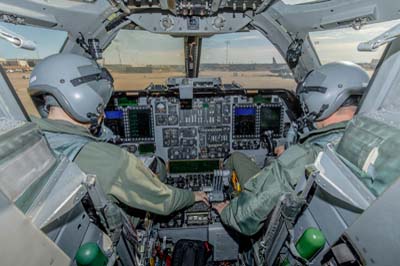 |
The B-1B Lancer has an all-digital cockpit, with pre-flight checks complete the pilots are ready to roll. |
Hugging the terrain
Flying fast and low in all-weather day and night is what the B-1B was designed to do. Equipped with the Northrop Grumman APQ-164 offensive radar, its capabilities include; high-resolution terrain mapping, terrain avoidance, terrain following, position data, and weather detection. Maj. Laney stated; "Low level penetration is still a valid tactic we practice with our terrain following radar (TFR) which can go down to 200 feet AGL. If we can put a mountain between us and what is looking at us, we are well protected."
Major Adam 'Stoneman' Flaherty, a B-1B pilot with 1,800 hours agrees; "Low altitude flying is one of the skill-sets we have and maintain. There are times when we go in at low altitude to get as close to the target without being detected. We will ingress low and at a certain range perform a max-performance climb with full after-burner at 25 degrees nose high, up to say 25,000 feet [7.620m] in less than a minute where we can deploy our weapons."
The TFR is constantly scanning the terrain, building a flight path for the set altitude. Pilots flying at night or in poor weather concentrate on the display. B-1B pilot Lt-Col. Tom Bowman with 28th BW at Ellsworth AFB, South Dakota spoke of his first flight using TFR; "Coming out of pilot training as a brand-new B-1 pilot and flying it with an all-weather terrain following capability was eye-opening. I was soon flying in the weather in the mountains at night and not seeing anything outside the aircraft while maintaining 500 feet [152m] at 540 knots, it's a phenomenal system and an incredible capability. It is a very reliable system, if it detects a problem it has a failsafe fly-up capability, so if we were in the weather at night and say the radar fails [which it relies on], you will get a tone and it will automatically pull up."
|
With a crew of four, the most important member is in the back
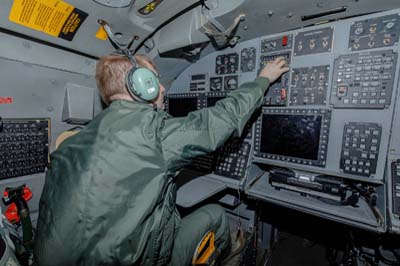 |
Behind the two pilots there are two weapons systems officers (WSOs), one mission station is defined as offensive systems officer (OSO) the other is the defensive systems officer (DSO).
The WSOs have three configurable screens, the DSO has a frequency scope, showing the direction of the threat. Another screen shows a map for situational awareness. Buttons are for chaff and flares plus transmitters for self-protection.
"For the WSOs it is always night", says Capt. Bunker and Instructor WSO. "In Texas where it is hot it is better to fly at night as the jet is cooler. For pilots however I am sure they would sooner see the ground and so prefer to fly during the day."
|
Behind the two pilots there are two weapons systems officers (WSOs), one position is defined as offensive systems officer (OSO) the other is the defensive systems officer (DSO). Both are trained to sit in each other's seat. The OSO is responsible for navigation and weapons deployment and will be the one primarily operating the Sniper pod. "The OSO is the most important guy on the jet" says Captain Anthony 'Wedge' Bunker an Instructor WSO with the 28th BS. He explained; "The point of the B-1B is to drop a bomb, the OSO's seat is the only one that does that. The pilots are just flying the OSO to the target, the DSO is protecting him," adding; "It's really a team."
The WSO will assist the pilots during low flying, despite having a restricted view they will monitor the radar altimeter. If it is set to maintain 500 feet (152m) AGL (above ground level) and they see the height drop to 450 feet (137m) WSOs will get a little nervous and call out the height. In a mountainous environment they can encounter low ridge crossings where they see the radar altimeter drop suddenly below the minimum set. That's where good crew resource management comes in, pilots see the ridge coming up and will call out 'low ridge crossing' to reassure the rest of the crew.
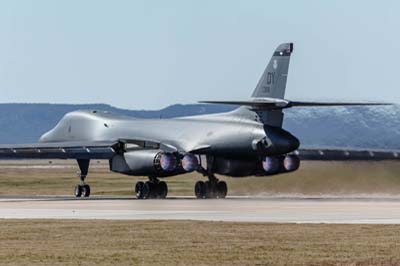 |
Accelerating down the runway at Dyess. The B-1B's variable-sweep wings (from 15 degrees to 67.5 degrees) and thrust-to-weight ratio provide it with improved take off performance, allowing it to use shorter runways. At low altitudes at high speeds the wings are set to maximum sweep to allow more Gs to manoeuvre.
The B-1B has four General Electric F101-GE-102 turbofan engines, with afterburner each engine produces 30,000-plus pounds of thrust. |
Bombing Run
Capt. Bunker described the sequence of events from using the radar to map the target to releasing the weapon; "Using the green dots, my job is to interpret what is a road, a vehicle or a building. I aim to get our air coordinates, open the doors, set to release and drop the bombs. We use standardised communications with the pilots, they could be busy flying the jet but need to know exactly what's going on. We make the final turn to the target, the pilots are waiting for the term 'captured', this means I have found target on radar. If they don't hear 'captured' after five seconds they begin to get nervous. We continue to say 'mapping', as we are down low our line of sight may be blocked. So, it's 'mapping', 'mapping', 'captured' and then 'doors'. The pilot will say 'platform' meaning they are not going to turn the jet. With an unguided weapon it's not going to correct itself, [the problem being] with a little bit of bank it will fling the weapon, with a little bit of pitch it will launch it, so we stay straight and level. I call, 'all bombs are armed'. We can hear the bombs being released. I say, 'switch is safe' which means they are able to manoeuvre the jet." All communications need to be clear and precise; "If the pilots are distracted for a few seconds we could hit the ground, they keep us safe and we deploy the weapons.", said Capt. Bunker.
For most situations they use the Sniper Pod at medium level with GPS guided munitions or for laser guided bombs when they need increased accuracy to hit a moving vehicle for example, which can speed up or slow down. "Laser guided is the hardest thing I have ever had to do, it's more complicated hitting a moving target", says Capt. Bunker. "With a 15 to 30-degree bank we fly an orbit around the target, making sure the target is not moving towards people or towns. It's harder if the vehicle is travelling at 60 mph (97 km/h), as the weapon can take a minute to fall, it could easily travel a mile (1.6 km). We ned to keep our situational awareness, you are aiming a minute ahead of the mover. The targeting pod has a tiny scope and the field of view is small. I have one hand to steer the targeting pod, the other is used to drop the weapon."
Protecting our forces on the ground
For Iraq, Afghanistan and Syria the mission primarily was about protecting allied forces on the ground. During these deployments joint terminal attack controllers (JTACs) on the ground frequently called in the B-1 for a fast and low 'show of force' to deter enemy forces. Lt-Col. Bowman describes this procedure'; "The JTAC will identify the need for a 'show of force' and call us, advising of any restrictions, they could request the lowest altitude possible [subject to the rules of engagement]. We will evaluate the terrain and decide on the best run-in heading. The OSO will enter points in to the avionics system that define the fly-over point and timing. If it's a threat permissive environment [no threats] the DSO will back up the OSO."
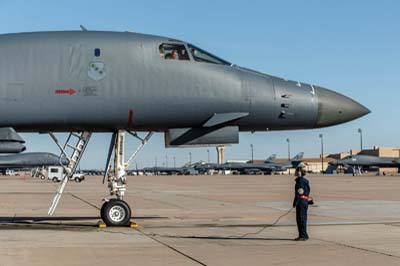 |
On the chocks at Dyess AFB, groundcrew in direct contact with the pilots clear them to start engines and indicate when they able to taxi. Safety procedures are paramount. |
Instructor WSO Capt. Bunker describes working with JTACs; "We must sound like we know what we are doing, so we use our WSO voice. The JTACS are down there in the fight, we instil calmness into the conversation, showing we are competent and there to help. That's one of the hardest things to teach, you must not sound like you are scared, if you are freaked out so will they be."
The pilots initiate a descent in to the low-level environment. The B-1 is obviously not as manoeuvrable as a fighter so they fly outbound a little further before they start their descent. They run through their checklists, in a combat environment aircrew discipline is important. "Even when people are on the ground shooting at each other, we still have to maintain proper airmanship and proper aircrew discipline so we can act effectively and safely", says Lt-Col. Bowman. The checklist ensures their attitude indicators are displayed correctly, ejection seats are armed, and proper airspeeds are maintained and bugged [a marker for minimum airspeed], so that if they are in a high performing part of the manoeuvre, they don't approach their stall speed or over G the aircraft. Further discussion ensues with the JTAC on the ground, there is a lot to consider, explains Lt-Col. Bowman; "Do they want us to dispense flares? We discuss the timing they can request a specific time or just state; 'as soon as possible'. We discuss the altitude, the direction we are coming in from and what are the restrictions. By the time we are getting to the point for the descent the run in is all sorted out and the JTAC has cleared us in. At that point we manoeuvre the aircraft to go in to a 20 degree nose low dive and level off, spending as little time down low as possible. The more time we are down low the more vulnerable we are to any kind of surface to air threat, whether it be small arms fire or Triple-A. We only aim to be at low altitude for around five miles [8 km] before we start our climb out back to medium altitude. It's a graduated approach, when JTACS call you in. We start with non-lethal, non-kinetic effects, then graduate to kinetic effect if the need arises.
When working with JTACs on the ground we are talking to them on their radios and you can hear gun fire in the background. You are called in to perform a 'show of force' and dispense flares, you put it in to full after-burner to make more noise. Coming off target the JTAC tells you the gun fire has stopped, that's a very fulfilling experience.
I can remember one flight over Afghanistan, we checked in with the JTAC, he was huffing and puffing, he had been running hard. They had come under fire and had to get to a safe point and were looking for weapons employment on the enemy which were attacking them. You reconcile what you are doing in the aircraft flying at 25,000 feet [7,620m] and how we view things with how the troops on the ground sees things, we were in two different worlds."
"The B-1 is formidable, intimidating, it's lethal and the enemy is aware of this, whether it is the Taliban in Afghanistan or ISIS in Iraq, they know what the B-1 is and they are afraid of it", asserts Lt-Col. Bowman.
|
